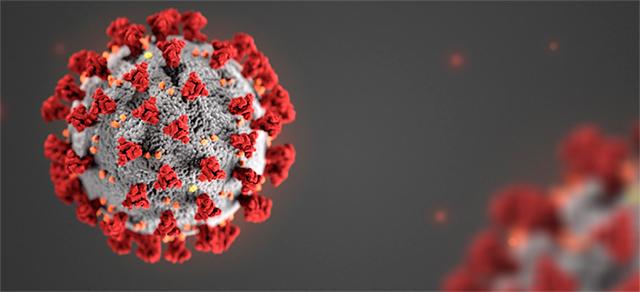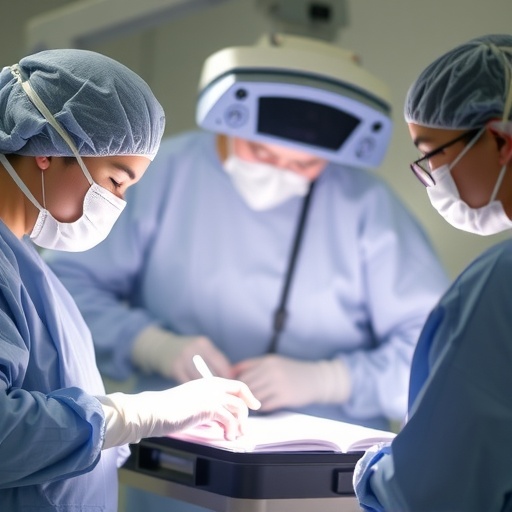With FAPESP’s support, researchers at the University of São Paulo in Brazil, Adolfo Lutz Institute and Oxford University in the UK trained a laboratory team to use a low-cost sequencing technology even before the virus arrived in Brazil.

Credit: CDC
Only two days after Latin America’s first case of coronavirus was confirmed in São Paulo, the largest Brazilian city, researchers at Adolfo Lutz Institute (IAL), the University of São Paulo (USP) in Brazil and the University of Oxford in the UK have published the complete genome sequence for the virus, which they call severe acute respiratory syndrome coronavirus type 2 (SARS-CoV-2).
The report was published on February 28 on Virological.org, a forum for discussion and data sharing used by virologists, epidemiologists and public health specialists. This kind of information helps understand how the virus is spreading around the world, and is useful for the development of vaccines and diagnostic tests.
“By sequencing the genome, we’ve come closer to finding out the origin of the epidemic. We know the confirmed cases in Brazil came from Italy, but the Italians don’t yet know the origin of the outbreak in Lombardy as they have yet to sequence their samples. They haven’t identified patient zero and don’t know whether he or she came from China directly or via other countries,” Ester Sabino, head of USP’s Tropical Medicine Institute (IMT), told Agência FAPESP.
According to Sabino, the first Brazilian sequence closely resembles the samples sequenced in Germany on January 28 and differs from the genome sequenced in Wuhan, the epicenter of the epidemic in China. “This virus mutates relatively little, once a month on average, so there’s no point in sequencing small pieces of the genome. To understand how the virus is spreading and evolving, we have to map the whole genome,” she said.
The researchers at IAL also sequenced the whole genome of the coronavirus isolated from the second Brazilian patient diagnosed with COVID-19, as the disease is officially called, on February 29. Completed only 24 hours after confirmation of the case in Brazil, the study shows that there are differences between the genomes of the viruses isolated from the first and second patients.
“The second Brazilian genome is more similar to the genome sequenced in the United Kingdom, and both differ from the Chinese sequences. This suggests the COV-19 epidemic is maturing in Europe in the sense that internal transmission is already occurring in European countries,” Sabino said.
The ongoing monitoring process, she added, will enable scientists to identify the regions of the viral genome that mutate least, an essential step in developing vaccines and diagnostic tests. “If the tests target a region that mutates frequently, the probability of loss of sensitivity will be high,” she said.
Epidemiological surveillance
Sabino and Nuno Faria, a professor at Oxford University, are co-principal investigators of the Brazil-UK Center for Arbovirus Discovery, Diagnosis, Genomics and Epidemiology (CADDE). The project, supported by FAPESP, the UK Medical Research Council and the Newton Fund, aims to conduct real-time epidemiological analysis of arboviruses such as dengue and zika.
“This project has created a network of researchers dedicated to responding to epidemics and analyzing epidemiological data in real time,” Sabino said. “The aim is to provide genuine assistance to health services and not just publish information months after the problem occurs.”
According to Sabino, as soon as China confirmed the first outbreak of COVID-19 in January, the project team mobilized to obtain the resources necessary to sequence the virus as soon as it arrived in Brazil.
“We began partnering with the IAL team and training researchers to use MinION, a portable, low-cost sequencing technology. We used this methodology to monitor the evolution of zika virus in the Americas, but in that case we were able to trace the origin of the virus and the dissemination route only a year after the epidemic ended. This time the team went into action as soon as the first case was confirmed,” Sabino said (read more at: agencia.fapesp.br/25472).
The main advantage of real-time epidemic monitoring, she added, is the possibility of identifying exactly where viruses that arrive in Brazil have come from. This information is useful to guide containment actions and help reduce dissemination of the disease.
“It’s a new tool for epidemiological surveillance. So far it’s been tested only in Africa during the Ebola epidemic,” Sabino said. “We wanted to publish this second sequence right away to help colleagues in Italy analyze their data. We shared the protocol used by our team with the Italians and put them in touch with the CADDE group in the UK.”
Breaking down barriers
The first case of COVID-19 in Brazil (BR1) was diagnosed by molecular biology on February 26 by the IAL team. The patient was infected in Italy, possibly between February 9 and 21. The viral genome was sequenced by a team led by Claudio Tavares Sacchi, who heads IAL’s Strategic Laboratory (LEIAL), and Jaqueline Goes de Jesus, a postdoctoral fellow of USP’s Medical School (FM-USP) and holder of a scholarship from FAPESP.
“We were expecting the virus to arrive in São Paulo State, and as soon as we had confirmation I got in touch with our partners at IMT-USP. We’d been working with them for months on the use of MinION to monitor dengue,” Sacchi told Agência FAPESP.
“We were able to break down a few barriers with this study. The university trained teams and transferred technology so that the virus can be sequenced in the right place, which is the center responsible for epidemiological surveillance. That’s how things should be done,” Sabino said.
Besides IAL and USP, the participants in CADDE include members of the Center for Control of Endemic Diseases (SUCEN) and the Center for Epidemiological Surveillance (CVE), both of which are agencies of the São Paulo State Department of Health.
Containment plan
Since mid-January infectious disease specialist Esper Kallás, a professor at FM-USP, has helped the São Paulo State Department of Health develop a care strategy for patients infected by SARS-CoV-2. The Emilio Ribas Institute and FM-USP’s general hospital (Hospital das Clínicas) have been designated referral centers for severe cases in the state.
“Hospital das Clínicas follows an emergency response and disaster containment protocol called HICS [hospital incident command system], which was triggered to care for victims of the school shooting in Suzano [a city in metropolitan São Paulo where ten people were killed in 2019] and during the yellow fever epidemic in 2018. We’ve now established all the care flows in anticipation of the imminent coronavirus epidemic,” Kallás said.
A working group has been set up, he added, to discuss protocols for clinical trials to be held with patients diagnosed and treated by the state’s health system.
“This strategic planning and rapid publication of the viral genome demonstrate São Paulo State’s capacity to respond with high-quality science and contribute to the understanding of threats to public health,” Kallás said.
Media Contact
João Carlos Silva
[email protected]
55-113-838-4351
Original Source
http://agencia.




